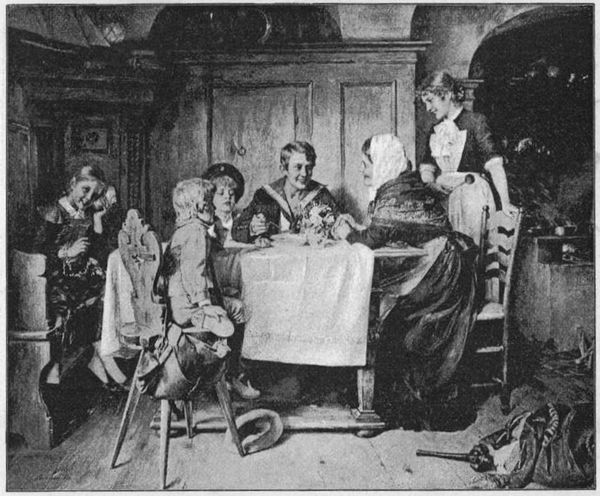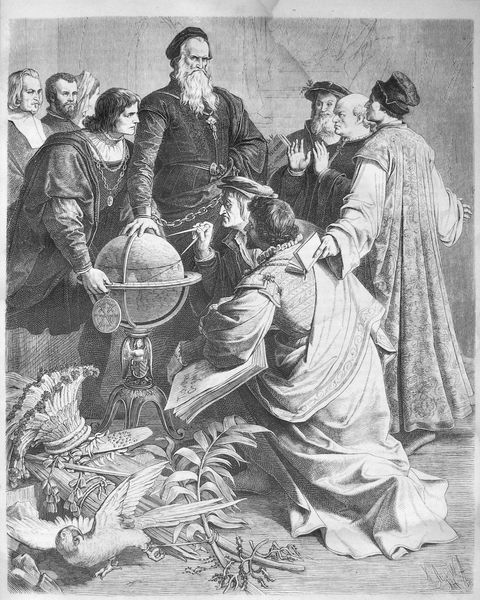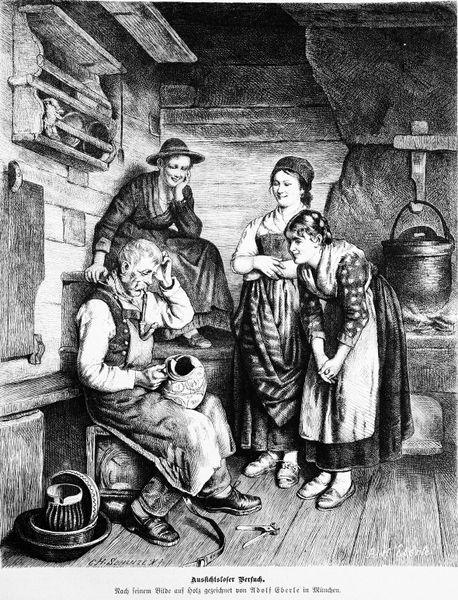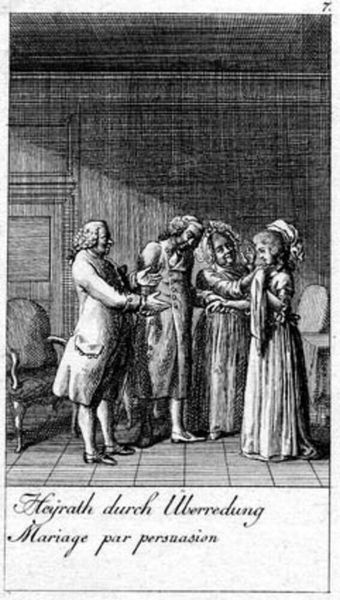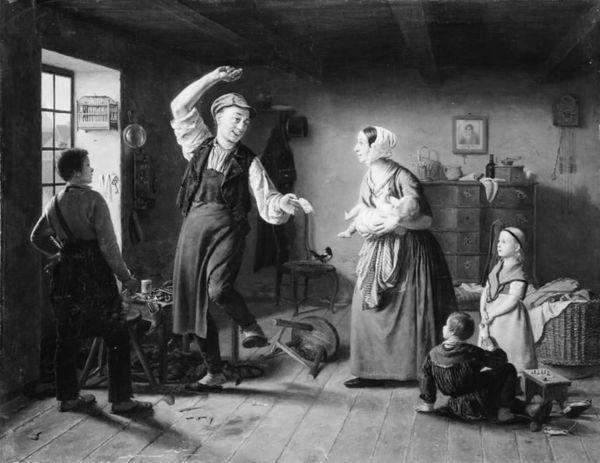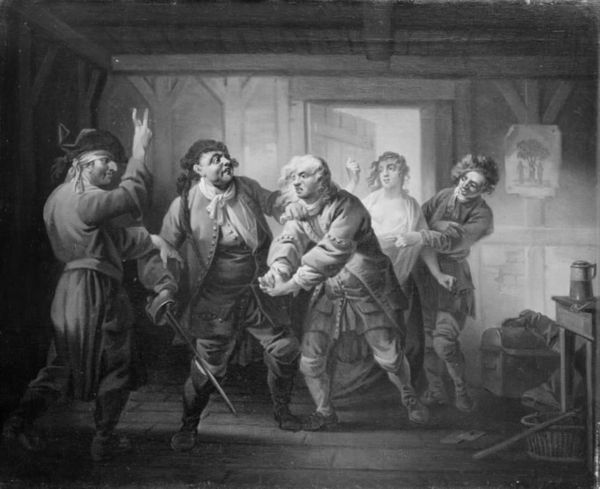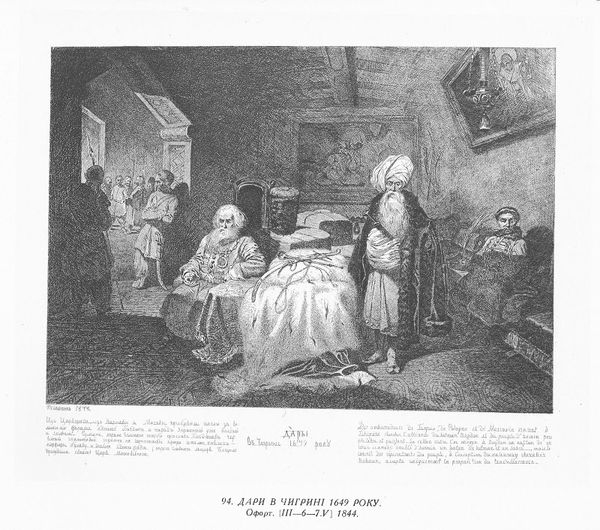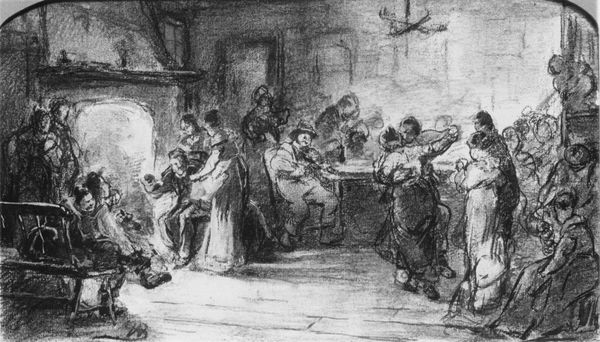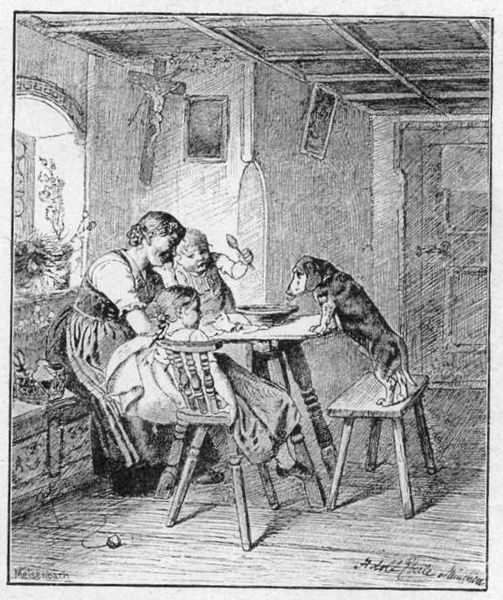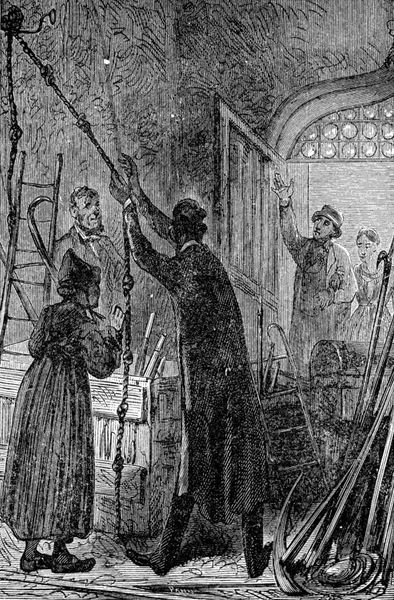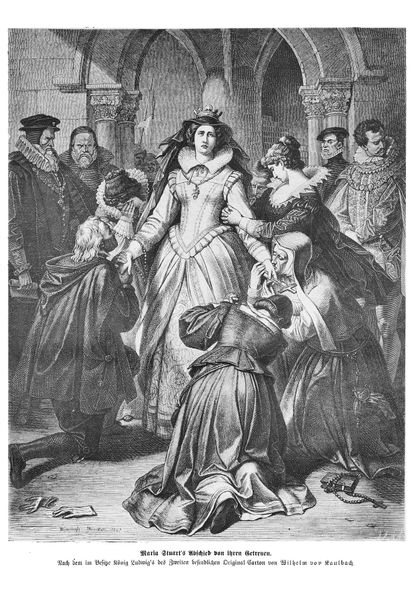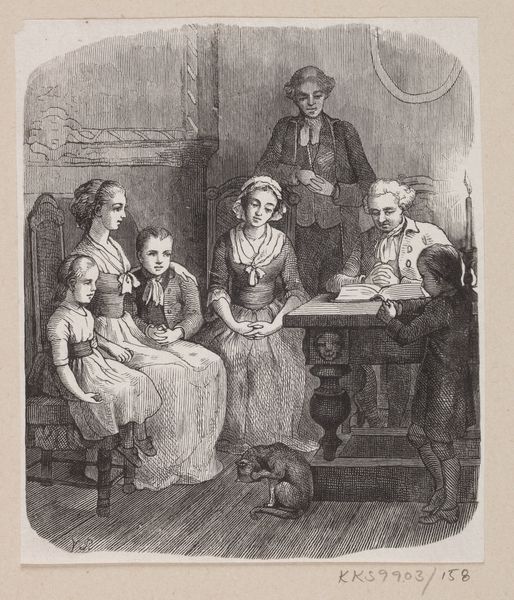
Dimensions: 329 mm (height) x 275 mm (width) (bladmaal)
Editor: This drawing, "Illustration til St. St. Blicher: "Mowns". Mowns vågner," by Hans Smidth, created in 1886, uses charcoal and pencil to capture a moment of intense emotion. It’s striking how the artist focuses on the texture of clothing and faces; they seem to emphasize the somber mood. What can you tell me about it? Curator: Notice how the drawing's impact isn't solely based on skillful rendering, but rather on the material conditions depicted. The rough, dark strokes of charcoal not only depict grief and awakening, but also hint at the social context – the hardscrabble existence of the subjects, made clear through their simple garments and the cramped interior space. How do you think the artist's choice of medium contributes to this sense of everyday reality? Editor: So you’re saying that the artist’s choice to work with pencil and charcoal, inexpensive and readily available materials, reflects the working class being represented? That they deliberately eschewed oil paints, for example? Curator: Precisely. It prompts us to consider art's role not just as aesthetic expression but as documentation of material culture and its influence. Even the visible layers and smudging of the charcoal could be seen as mirroring the complexities and imperfections inherent in labor and rural life. Consider the consumption of art in this context too; the print allows the story and its message about these lives to spread wider than an original painting might. Editor: I hadn't considered the drawing medium as a direct link to the socio-economic status of the people portrayed. Now I see how Smidth’s choice impacts the meaning so directly. Curator: Exactly. By examining the materiality and production, we move beyond simply admiring the "beauty" of the piece and grapple with its broader implications about life and art itself.
Comments
No comments
Be the first to comment and join the conversation on the ultimate creative platform.
